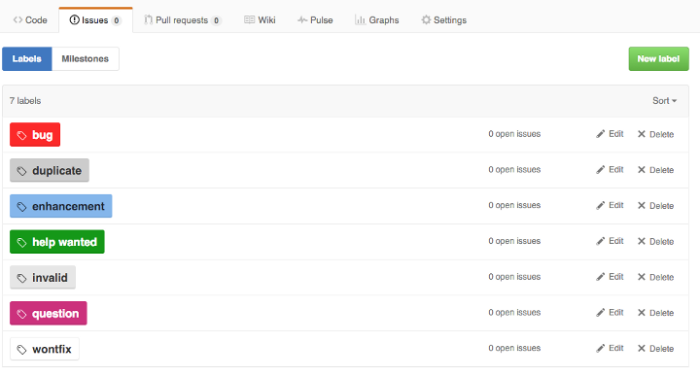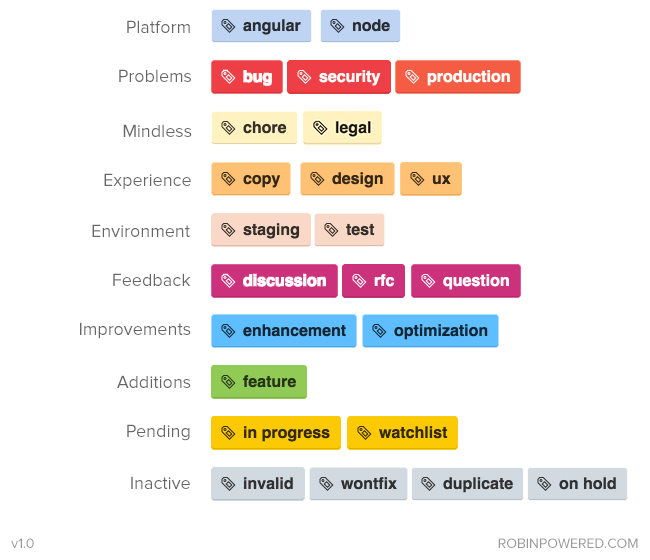Signs That You’ve Outgrown Github
Github is WONDERFUL. I have used it for a long time now, and it’s great. It’s easy to get started, and especially for one-person projects, it really helps keep things organized.
But as you start to add team members, competing priorities, and overall complexity, something changes. In lots of little ways, Github starts to show that it just wasn’t designed for long-haul software projects, with many team members and a non-trivial workflow.
Here are some of the things you might already be dealing with:
- You’ve created so many labels that you’ve written a wiki page to tell everyone how to use them (and how NOT to use them!)
- Maybe you want to keep track of bugs and support tickets separately.
- Perhaps you don’t think that developers should be able to close a ticket just by committing code.
- Maybe you’re tired of having to search in Google Docs, Basecamp, Slack and Github to find where you talked about that new feature.
- Could be that you need to manage the relationships between tasks that depend on or block each other.
I’ll do a blog post for each of these topics. This week, let’s start with the first one — labels.
Labels
Labels are quick and easy to use, offer a lot of flexibility and require virtually no setup or configuration overhead. The default labels in Github look something like this:

Those are probably fine for 98% of new Github projects. Over time, however, most teams will expand on the list of tags to include different values than the default list, and even different types of data. Adding categories for basics like type, priority, and status makes a lot of sense when you’re managing a backlog. But all of those new values expands the list beyond what you can keep straight in your head.
So, how can teams use complex label sets reliably? One common convention is to use a prefix word to identify the group to which each label belongs (courtesy of Dave Lunny):



This approach has the benefit of including the type of label as part of the label text, so you won’t be confused between “Status: Test”, “Environment: Test”, and “Task Type: Test”. Visually, the various colors can be used to show differences in the specific values, like production vs non-production, or high priority vs lower priority.
The downside is that when viewed across label types, the different colors are confusing and even downright jarring. Instead of quick visual signals based on color, you actually have to read each label value. It’s bad enough when looking at a single task, but when browsing a list of tasks, it can be a hot mess.
Another approach is to use similar colors for grouping. Here’s an example (from robinpowered.com):

While it’s much easier on the eyes, you no longer have the label type included with the label value. Also, this particular set of labels combines and separates a lot of values in ways you won’t appreciate later — for example, why is the production label in “Problems” and not “Environment”? There’s likely information on a wiki page somewhere, explaining that you don’t choose anything from “Environment” when it’s a production issue, right?
This next example isn’t really an example at all, but a cautionary tale. Imagine walking into your first day with these guys:

This isn’t someone’s drug-addled fantasty project, either — it’s servo, a very active and popular project on Github.
Tools For Your Tools
In response to this widespread need, there are actually tools (like git-labelmaker) dedicated to helping Github users automate the creation and management of complex sets of labels, using different naming conventions, color schemes and labeling styles. Which is very cool — except that it seems like an awful lot of work to go through, doesn’t it? If someone has created a tool to help you use another tool, maybe it’s the wrong tool.
Tag/label functionality was never designed for complex values or workflow.
A Right-Sized Solution
Instead of a mashup of various labels, organized by a prefix word or a color scheme, consider this layout (with a few additions that are, IMO, obvious):

Separating these various concerns also allows you the flexibility to require some fields when a task is created, and wait for the right step in your workflow for others. Instead of manually enforcing your task management process, you can allow your tool to do it for you.
One last benefit — if you’re using separate fields instead of specific tag values, then changing the name of the field or the values over time won’t break old data. The new field name or value(s) will be reflected in older tasks automatically.
If your tools are preventing you from improving your process, maybe it’s time to improve your tools.
Come back soon for another sign that you might have outgrown Github — next time, we’ll talk about Github’s one-dimensional task tracking.
Come try GForge Next for simple, comprehensive and elegant collaboration.
